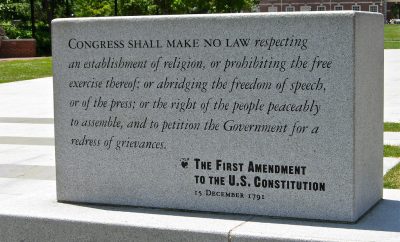
News
When the Government Floods Your Property
In Oct. of 2012, the Supreme Court heard oral argument from the Arkansas Game and Fish Commission on whether the federal government should have to pay for inducing floods into the former’s wildlife area for over seven years. This past week on Dec. 3, the Appeals Court for the Federal Circuit, on remand from the Supreme Court, affirmed a figure of over $5.7 million to be paid to the agency, ending a long drawn-out battle.
A river ran through it.
In 1957, the Arkansas Game and Fish Commission, a state wildlife conservation agency, bought 25,000 acres of land downriver from a government dam, hoping to “preserve bottomland habitat and provide waterfowl hunting”. Each year the tide of the Dave Donaldson Black River Wildlife Management Area would rise as the dam, built by the Army Corps of Engineers in the ‘40’s, released water downstream in an attempt to lengthen harvest times for local farmers.
For over 40 years, the seasonal washes never really did any real damage. The water flowed in, and then it flowed out, leaving the surrounding wildlife intact. But everything changed late in 1993 when the Corps adopted a more aggressive release standard. This time, the floods from the dam reached dangerous heights of six feet. The oaks and various hardwoods– “choked” of oxygen from the stagnant water– began to die. And notwithstanding the outcries of Commission representatives, they kept dying over the next seven years while the floods continued.
Payday
AGFC filed a suit against the government in Federal Claims Court, arguing that the flood damage incurred by the Management Area called for monetary reimbursement in accordance with the Fifth Amendment’s Takings Clause. The Takings Clause, as the name would suggest, originally mandated that in cases where the government requisitioned private property, they would have to reimburse the owner with a fair amount. But over the last century, the Takings Clause has been expanded to include cases where any variety of government actions reduce the market value of a property. Given those broad parameters, judges use ad hoc jurisprudence when assessing Takings Claims. This time with the AGFC was no different. The court awarded them $5.7 million for damages, and $176,428 for restoration. But it was far from over.
Flip. Flop.
In the Court of Appeals for the Federal Circuit, the decision was reversed, and the AGFC, who had not long before been staring at a pretty good sized check, were left shouting “TIMBER!!!” as their hopes for compensation fell down around them. The Court found that the Takings Clause in this case didn’t hold any water… well, in a figurative sense. They reasoned that only in instances when permanent change had been done unto the property could the Takings Clause be invoked. In cases of flooding, whereby property reverts to its previous state after the water rushes out, is not permanent.
But like fellow Arkansan Bill Clinton post-Monica Lewinsky, there was hope yet for the AGFC. The Supreme Court granted cert mid-2012 and overturned the appeals court’s decision, once again awarding the Commission the money. Here, Supreme Court justices wax philosophical on the nature of the Takings Clause:
JUSTICE BREYER: The problem with a flood is you don’t take all the land. You send some stuff in. And the stuff is there for a while, and then it comes back, and — it’s called water. And so I don’t know what to make of the cases like Kimball Laundry where you actually appropriate the property. I suspect that they are not quite the same. Anything else? I got Dickinson. I’ve got Kimball Laundry.
JUSTICE SCALIA: We have cases about flying overland—
JUSTICE BREYER: Yes, Causby.
JUSTICE SCALIA: — cases about shooting — shooting overland. Right?
MR. GOODHART: Yes, Your Honor. The Causby case —
JUSTICE SCALIA: That’s not water, but it ain’t taking, either, in the — in the narrow sense that Justice Breyer has talked about.
This latest decision by the Court of Appeals for the Federal Circuit was one prompted by the government, who wanted a retrial for the purposes of fact finding. Specifically, they disputed everything from causation of the floods to the appraisal of the damages. The court saw no error in the findings of the original court and affirmed the aforementioned recompense.
But what does it all mean?
The implications of this case aren’t lost on the Pacific Legal Foundation, whose work in property rights has made them a critical voice of government land-use. “If government commits a taking, including flooding or occupying someone’s land,” writes Brian Hodges in a PLF blog article,”there is an obligation to pay, period.”
Though the matter at hand has been decided, these are still interesting questions. Is the government to pay even when the action they take serves the benefit of a large group of people? Couldn’t that possibly open up room for a stampede of new litigants who, because of government actions, have had reductions in their property values? And even more pressing: if a stampede of federal claims were to happen, wouldn’t the government be loath to do or build anything at all? Bridges… dams… highways… infrastructure projects…But of course to some, that probably wouldn’t be such a bad thing.
[U.S Court of Appeals for the Federal Circuit]
—
Featured image courtesy of [Linda Tanner via Wikipedia]








Comments